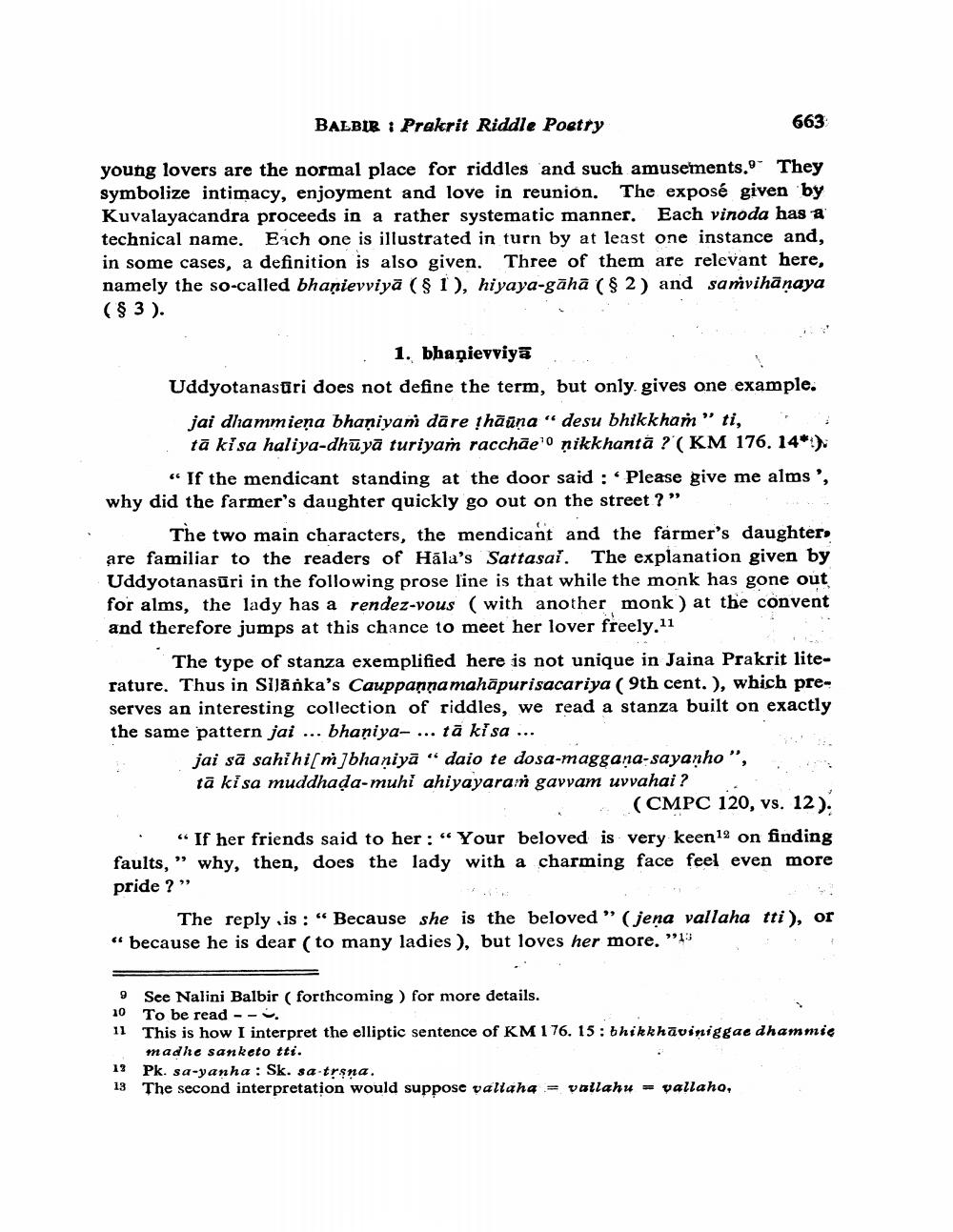Book Title: Prakrit Riddle Poetry Author(s): Nalini Balbir Publisher: Nalini Balbir View full book textPage 3
________________ BALBIR : Prakrit Riddle Poetry young lovers are the normal place for riddles and such amusements. They symbolize intimacy, enjoyment and love in reunion. The exposé given by Kuvalayacandra proceeds in a rather systematic manner. Each vinoda has a technical name. Each one is illustrated in turn by at least one instance and, in some cases, a definition is also given. Three of them are relevant here, namely the so-called bhanievviya (§ 1), hiyaya-gāhā (§ 2) and samvihāṇaya (§3). 1. bhagievviy Uddyotanasuri does not define the term, but only gives one example. jai dhammieņa bhaniyam dare thaana" desu bhikkham" ti, tä kisa haliya-dhüya turiyam racchae10 nikkhanta ?(KM 176, 14). "If the mendicant standing at the door said: Please give me alms', why did the farmer's daughter quickly go out on the street?" 663 The two main characters, the mendicant and the farmer's daughter. are familiar to the readers of Hala's Sattasai. The explanation given by Uddyotanasuri in the following prose line is that while the monk has gone out for alms, the lady has a rendez-vous (with another monk) at the convent and therefore jumps at this chance to meet her lover freely, 11 The type of stanza exemplified here is not unique in Jaina Prakrit literature. Thus in Sanka's Cauppannamahāpurisacariya (9th cent. ), which preserves an interesting collection of riddles, we read a stanza built on exactly the same pattern jai ... bhaniya-... tā kisa... jai să sahihi[m]bhaniya "daio te dosa-maggaṇa-sayanho", tä kisa muddhada-muhi ahiyayaram gavvam uvvahal? (CMPC 120, vs. 12). "If her friends said to her: "Your beloved is very keen12 on finding faults," why, then, does the lady with a charming face feel even more pride?" 9 See Nalini Balbir (forthcoming) for more details. 10 To be read. The reply is "Because she is the beloved" (jena vallaha tti), or "because he is dear (to many ladies), but loves her more. " 11 This is how I interpret the elliptic sentence of KM 176. 15: bhikkhāviņiggae dhammie madhe sanketo tti. 13 Pk. sa-yanha: Sk. sa tṛṣṇa. 13 The second interpretation would suppose vallaha = vallahu = vallaho,Page Navigation
1 2 3 4 5 6 7 8 9 10 11 12 13
